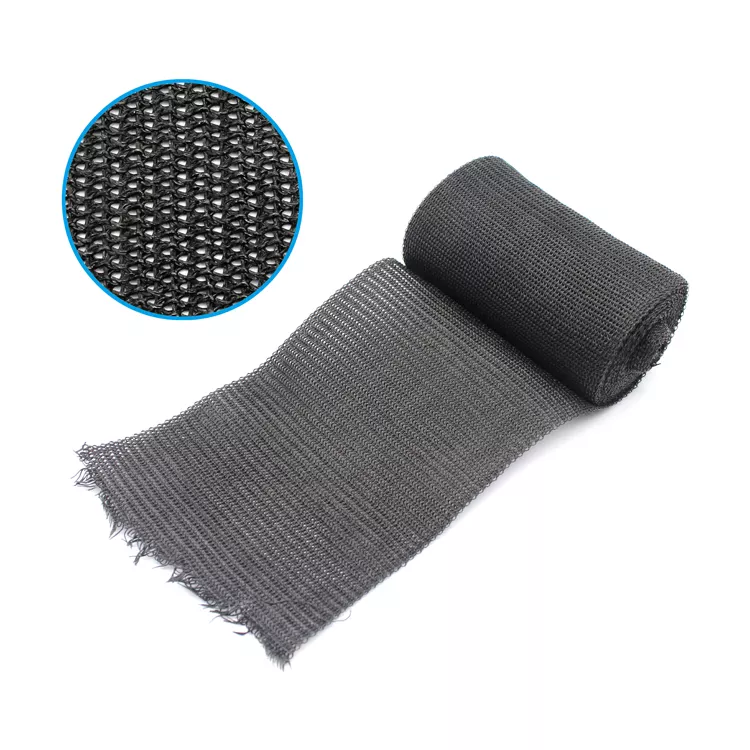The Role of Semiconducting Tape in Modern Technology
In the ever-evolving landscape of technology, the importance of materials that exhibit semiconducting properties cannot be understated. Among these materials, semiconducting tape has emerged as a remarkable innovation, providing unique solutions for various applications across multiple industries. This article explores the significance, functionalities, and potential applications of semiconducting tape, illustrating why it has become an invaluable asset in modern technology.
What is Semiconducting Tape?
Semiconducting tape is a specialized type of adhesive tape that incorporates semiconductive materials, allowing it to perform electrical functions while maintaining the versatility of traditional tape. Typically composed of polymers infused with conductive fillers, such as carbon black or metal nanoparticles, this tape can efficiently conduct electricity while still being flexible and easy to handle. Its ability to provide both mechanical support and electrical conductivity makes it a standout choice in many technological applications.
Applications in Electronics
One of the principal uses of semiconducting tape is in the electronics sector. With the increasing miniaturization of electronic components, there is a growing need for materials that can provide effective conductivity in compact spaces. Semiconducting tape offers an excellent solution for connecting various electronic components, such as sensors and circuitry, without adding significant bulk to the designs.
For example, in wearable technology, semiconducting tape is often used to connect sensors to a power source or to integrate electronic circuit connections seamlessly. Its flexibility allows it to conform to the contours of wearable devices, ensuring comfort and functionality for the end-user.
semi conducting tape

Role in Renewable Energy
Another promising application of semiconducting tape is in the field of renewable energy, particularly in solar technology. As the demand for sustainable energy sources grows, so does the need for efficient energy conversion methods. Semiconducting tape can be used in the production of solar panels to improve electrical connections between various elements of the photovoltaic cells. By enhancing conductivity and ensuring a robust electrical interface, semiconducting tape can contribute to higher efficiency and better performance of solar energy systems.
Advancements in Research and Development
Ongoing research into the properties of semiconducting materials continues to expand the potential applications of semiconducting tape. Innovations in material science are leading to the development of tapes with enhanced capabilities, such as increased conductivity, improved durability, and responsiveness to environmental changes. This research holds promise for further advancing the effectiveness of semiconducting tape in novel applications, including smart electronics and Internet of Things (IoT) devices.
Conclusion
Semiconducting tape represents a fascinating intersection of material science and technology. Its ability to combine electrical and mechanical properties makes it an indispensable resource in modern electronics and sustainable energy systems. As technology continues to progress, the role of semiconducting tape is likely to grow, paving the way for new innovations and applications that can enhance the efficiency and functionality of a wide range of products. Its significance in the future of technology cannot be overlooked, and continued research in this area may yield even more astounding results.
-
XIANGFAN Rubber Tape-Ultimate Solutions for All Your Insulation NeedsNewsJun.24,2025
-
XIANGFAN Rubber Tape-Protection for Industrial and Residential ApplicationsNewsJun.24,2025
-
XIANGFAN Rubber Tape: Superior Safety and Sealing for Demanding EnvironmentsNewsJun.24,2025
-
XIANGFAN Rubber Tape: Reliable Solutions for Every Electrical ChallengeNewsJun.24,2025
-
XIANGFAN Electrical & Industrial Tape: Powering Reliability Across IndustriesNewsJun.24,2025
-
XIANGFAN Electrical & Industrial Tape: Excellence in Every ApplicationNewsJun.24,2025
